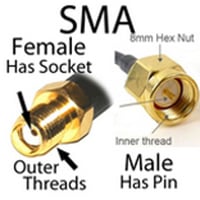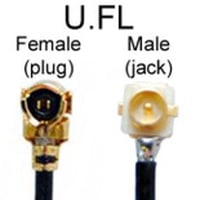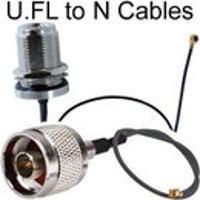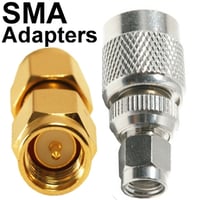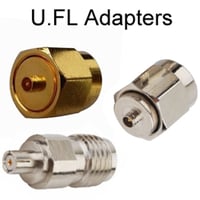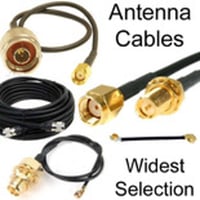Large Enclosures w/ 120V or 240V AC Outlets
Large Enclosures w/ 120V or 240V AC Outlets:
Large NEMA enclosures to securely protect outdoor electronics: These high-specification enclosures, often equipped with vents, heating, and fans, are equipped with insulation performance and thermostatic control to ensure that the functioning of your equipment or network is safeguarded. The NEMA system of ratings makes selecting the right large enclosure for your equipment easy.
Waterproof / Weatherproof Outdoor Enclosures with Internal Electric Outlets
Large outdoor wireless enclosures with 120 or 240 volt AC outlets are a specialist type of electrical enclosure. These metal or plastic lidded and hinged boxes are used to provide housing and route power cabling and supply for a wide range of wireless networking equipment including routers, access points, antennas, signal boosters, and any attendant thermostatic controls. They are also called NEMA enclosures, due to their associations with the National Electrical Manufacturers Association (NEMA) certification system and wireless boxes. The term NEMA enclosures can be used to describe enclosures that are not NEMA-rated.
These enclosures vary in size and specifications with large wireless enclosures with mains AC power outlets providing venting, heating, and cooling to provide a thermostatic and moisture controlled interior environment. They are used for both indoor and outdoor wireless networking installations and are manufactured to be able to withstand extremes of temperature and the ingress of moisture and dust. Our selection of large weatherproof enclosures:
- Have market-leading fabrication and structural integrity.
- Are fully NEMA rated (as explained below) to provide robust protection from the outdoor environment.
- Will not interfere or diminish the performance of wireless equipment installed within them.
- Have secure latches (that can be padlocked) and also allow convenient access to personnel for maintenance and repairs.
- Have electrical components and wiring that is compliant with the EU Restriction on Hazardous Substances (RoHS) legislation and Conflict Minerals Regulations.
Large electronics enclosures can be mounted in a variety of ways. They can either be wall-mounted or pole-mounted with the correct brackets and bolts. Alternatively, it can be laid flat without compromise of performance. Within the enclosure, the wireless equipment can be mounted on a removable mounting panel also.
Key components and features of large enclosures with 120V or 240V AC outlets
- Outer case
The outer housing of these enclosures for wireless networking is made from durable plastic that will not block radio frequency signals. Plastics used for such enclosures include:
- Acrylonitrile Butadiene Styrene (ABS)
- Polycarbonate
- Polystyrene
- Polyvinylchloride (PVC)
- Polypropylene
The enclosure plastics may also have UV-resistant and flame retardant finishes.
- Cooling fan
High specification wireless enclosures have integrated fan modules that provide responsive cooling for powered electronic equipment so that a thermostatically-controlled environment is continually maintained. Fans are effective at keeping critical wireless networking gear within the temperature range needed for optimal performance and can not only prolong the life of wireless devices but also save energy. The fan module is often vented and mounted inside the door of the electronics enclosure where it can draw in large volumes of air. Alternatively, enclosure fans are mounted on panels or DIN rails within the enclosure.
- Filters
These enclosures carry one or more electronics air filters which are vital for keeping moisture and dust out of the enclosure while air is drawn in or pushed out by the fan. Disposable polyester air filters arrest dust ingress and can be readily replaced. Many graded filters are also treated with flame-retardants to reduce fire risk. They are also useful for protecting personnel fingers from the fan.
Mounting plates (also known as backplates or perforation plates) sit within the enclosure and provide a punch-hole surface for secure mounting of electronic components. They are usually made from lightweight aluminum. It will come with the screws needed for screwing the panel into the enclosure. Electrical apparatus can be directly fixed to the panel or DIN rails can be installed. DIN rails are advantageous as they provide a quick and convenient system for mounting internal equipment securely. DIN screw-in rails have standardized dimensions and work with a broad range of mounting hardware.
- Internal AC outlets
Powered outdoor wireless enclosures carry internal power outlets to provide mains AC power for wireless access points and routers, and supplementary fans and heaters. These surge-protected power outlets are wired in and fixed to the metal mounting plate of the enclosure. These powered enclosures accommodate either 120 Volts, which is common in the US, or up to 240V with an alternate design.
- H-cut and D-cut holes
These holes in the base of the enclosure can be used for routing cables with a suitable grommet, passing an N-type bulkhead connector, or can be blocked with a suitable H/D-Cut NEMA Hole Plugs if redundant.
- A grounding lug
Wireless devices that are installed within the NEMA enclosure must be properly ground for not only safety purposes but to ensure they operate properly and within any EMI requirements. A pre-attached grounding lug facilitates the connection of a grounding conductor to its counterpart grounding electrodes.
- Cable conduit
Cabling can be routed into and out from the enclosure while maintaining its weatherproofing using sealed conduits and glands that also protect the cables from twisting or abrasion damage. Cable conduits are threaded connectors that pass through the raw outlet hole in the enclosure. They are convenient and secure. Each conduit or gland possesses a nut that is tightened down at one end and a sealed cap at the other that also screws tight for a good fit. The cable can then be passed through the conduit.
- Intake exhaust covers
Good ventilation is critical to the preservation of the performance of outdoor wireless installation and large enclosures that have AC power will require good air circulation to keep the wireless components cool. Air can be drawn by integrated fans into the enclosure via the vents and filters described above, with an intake exhaust cover over the necessary vents, impeding the ingress of larger particles and dust while directing the flow of fresh air into the enclosure. These exhaust covers are typically mounted on the door of the unit.
- Quick-release lockable latches
Large NEMA enclosures come with a range of locking mechanisms that keep the enclosure firmly shut and also keeping the enclosure safe from unauthorized access and vandalism. The enclosure latch or lock also has to deliver a level of secure closing that does not compromise the NEMA or Ingress Protection rating for the enclosure.
Why are large enclosures with 120 volt or 240 volt AC outlets important?
Over the past 20 years, the expansion of Wireless Local Area Networks (WLAN) has been near exponential with wireless access to the internet expected in settings as diverse as parks, restaurants, factories, schools, and airports. Along with this growth, expertise and the technical execution of public and private WLANs has become more sophisticated and has necessitated the installation of Wireless Access Points (WAPs or AP) in a range of locations to provide the wireless connectivity demanded by modern life and industry. The APs and routers are interfaces between an Ethernet cabled network and wireless internet access, and so need to be advantageously positioned throughout buildings, harsh industrial environments, or outdoor spaces as required.
Long-term installation of wireless networking equipment and their associated connections requires suitable housings and enclosures that can protect the wireless installation from physical impacts, environmental exposures, and the ingress of moisture and dust that can age and degrade the equipment. Repairing and replacing compromised antennas, cables and routers are costly in both money and network downtime, so a high-specification enclosure proves great value for money over time! Large wireless enclosures, such as those used to house APs are climate controlled meaning that they can withstand the extremes of temperature that can be encountered throughout the year. The mounting cable and outlets provided help keep the orderly arrangement and routing of cables and components in the interior of the enclosure.
The wireless equipment kept in an enclosure often requires line of sight visibility with maximum exposure so it is viable that the housed electronics are kept secure and tamperproof.
Wireless enclosures are made from durable plastics, that, unlike metal, will not degrade signal strength, and their smart and unobtrusive appearance gives the area where they are installed a smart aesthetic. One properly fitted, an entire enclosure complete with devices and cables can be securely mounted where wireless connectivity is needed. An enclosure with mains AC power connections can be relied on for power if an access point does not receive its power through the network connection.
Large enclosures protect wireless installations from a range of environmental hazards
- Large enclosures with 120V or 240V AC outlets protect equipment from moisture
These enclosures deliver reliable protection against liquids and precipitation like rain, snow, or ice build-ups. In humid environments moisture can enter devices and cool on their exposed parts, causing corrosion and degradation. Corrosion is a progressive process and once started cannot be stopped, so prevention is key. NEMA enclosures are rated according to their level of protection against water and moisture ingress, using seals and fans to keep the internal environment of the enclosure properly ventilated and dry.
- The effects of air pollution are prevented by using a large wireless NEMA enclosure.
Sulfur dioxide, acid rain, and other air pollution chemicals and atmospheric gases will rapidly age an exposed installation. This is a significant problem in high urban environments with high traffic or industrial areas where emissions are high. These substances cause a build-up of tarnish or frank corrosion on connectors which can begin to alter their electrical performance and disturb the wireless connectivity provided by the assembly.
- Large enclosures with 120V or 240V AC outlets will keep dust and particulate matter out.
Keeping particulate matter and dust away from your wireless equipment will prolong its lifespan. It is vital for manufacturing and industrial environments where grime can build up rapidly. Dust is a key cause of short-circuiting and failure of wireless and other electronic devices as it gradually builds upon exposed components and seeds corrosion or causes mechanical changes, for example by settling in the threads and crimping of radio frequency connectors. Moisture also accelerates the damage caused by dust like soot, sand, or mineral salts.
- With a large electronic enclosure wireless equipment is protected from temperature extremes.
Every component within a wireless networking device will have specified limits on the extremes of temperature that it can withstand before becoming dysfunctional. Keeping equipment within an enclosure will shield it from the outside air temperature, whether hot or cold. Temperature extremes will affect the performance of WiFi and other wireless networking equipment so sourcing a NEMA enclosure with thermal control is a prudent investment. Powered units within the enclosure can easily overheat, again causing damage to delicate electronic components. An integrated fan works to dissipate excess heat through strategically positioned vents. For extremely low temperatures heat strips and 120V or 240V AC enclosure heaters can maintain a steady temperature within the enclosure when the external temperature drops. For most enclosures heating will require mounting and wiring-in, but some models have it concealed behind the mounting plate.
Use of the NEMA rating system provides confidence that a wireless networking installation is properly protected
Several rating systems exist for describing the level of protection conferred by a particular enclosure. Notable examples include Ingress Protection (IP) Codes and the Underwriters Laboratories (UL) certifications. These weatherproof and waterproof ratings, carried by large wireless enclosures, are used by manufacturers and distributors to specify the level of protection provided by the enclosure. They objectively categorize the enclosure’s impermeability to moisture and dust and its ability to withstand temperature extremes and impacts.
- National Electrical Manufacturers Association (NEMA) ratings
This North American rating system is widely used for the grading of electrical and wireless enclosures. NEMAs standardized ratings outline the key features of a broad range of enclosures based on their ability to withstand water, chemicals, dust, and other intrusions. The NEMA rating of an enclosure can be used to achieve a more precise match between the enclosure and its intended application so that the equipment inside is properly protected.
NEMA ratings run from 1 to 13 and are used for both indoor and outdoor enclosures in a range of conditions:
- NEMA 1 enclosures are used indoors and primarily protect the equipment they hold from the ingress of dust, dirt, and other foreign objects. They also are rated for protecting personnel that handles the enclosure from coming into contact with hazardous parts.
- NEMA 2 enclosures are also for indoor use. In addition to their protection against dirt, they are resistant to light exposure to water (e.g. droplets and splashes).
- NEMA 3 rated enclosures are for outdoor use and can withstand rain, sleet, and the build up of ice on the outside of the enclosure. They are not fully waterproof.
- NEMA 3R latched, outdoor wireless enclosures also protect against precipitation, ice, and splashes or drips of water. They do not have seals or gaskets and are not fully waterproof
- NEMA 3SX wireless enclosures are outdoor enclosures that provide protection from wind-blown dust, rain, and sleet and have added protections to maintain functionality even when the enclosure is covered in ice. The X designation denotes that the enclosure confers corrosion protection.
- NEMA 4 rated enclosures are for outdoor use. These wireless enclosures have greater protection against water and moisture ingress and can withstand hose directed water spray in addition to the protections outlined above. Corrosion protection is indicated if and X is added to the rating.
- NEMA 5 indoor enclosures protect their contents from splashes and drips of water and other non-corrosive liquids and also settling dust and falling dirt.
- NEMA 6 enclosures can be used in either indoor or outdoor settings and have greater water resistance than the previous levels. NEMA 6 enclosures withstand hose directed water and short periods of immersion at a limited depth.
- NEMA 6P wireless enclosures can tolerate prolonged submersion in water.
- NEMA 7, 8, and 9 large enclosures are designed for hazardous environments and are explosion-proof, oil proof, and dust ignition-proof respectively.
- NEMA 10 enclosures are specifically rated inline with the health and safety requirements outlined for mines by the Mine Safety and Health Administration.
- NEMA 11 enclosures can withstand immersion in oil and contact with corrosives and other industrial substances.
Frequently Asked Questions
Are there any other items required for protecting wireless equipment outdoors?
There are many devices and accessories that can be used to further protect an outdoor wireless networking installation. These items will work well with the selection of large wireless enclosures shared above.
- N-type connector surge protection devices are essential for protecting sensitive electronics from an unexpected surge in voltage. N connector lightning connectors can be readily inserted into D-cut holes on many models of wireless enclosure. They then facilitate the easy coupling of compatible coaxial cable, for in-line protection from the antenna to the device.
- Grommets are useful for protecting the edges of enclosure outlets which may be sharp and able to damage cables.
- Glands: cable glands provide sealed practical access points to the enclosure that can be used for routing cable, USB, fiber, SIM, and terminal block.
- Coaxial sealant tape is a moldable weatherproof tape that can be wrapped around connectors and cabling that is outside of the assembly. It shrinks and molds to provide a waterproof and thermally stable seal.
- Adhesive rubber gaskets can also be purchased to improve the weatherproofing of an enclosure. The seal can simply be cut to size and stuck to the enclosures opening.
- Silicone grease or dielectric grease is used to waterproof radio frequency connectors. It can be applied to cable assemblies to completely impede moisture ingress and protect against corrosion.
In Conclusion:
Large outdoor wireless enclosures with power supply are a critical investment to safeguard the performance of a wireless networking installation. High-specification large enclosures are equipped with the hardware and ratings to ensure a protective thermally-controlled environment for sensitive electronic equipment, complete with secure and safe connectivity to a mains power supply.
LEARN MORE:

